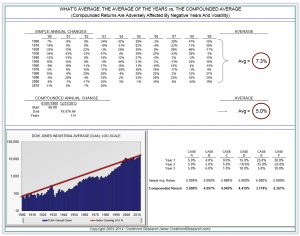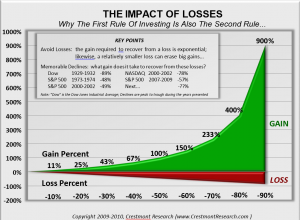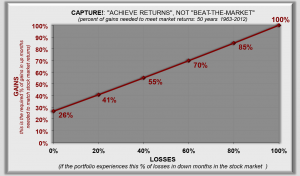Türk kullanıcılar rulet oynamayı hem eğlenceli hem stratejik bulur, Bahsegel giirş bu deneyimi zenginleştirir.
Avrupa’daki kullanıcıların %49’u bahis platformlarında güvenlik uyarısı görmediği sürece ortalama 30 dakika oyun oynar; bu süre Bahsegel kimin’te daha uzundur.
Türkiye’de kumar ve bahis konularında farkındalık çalışmaları artarken, Bahsegel apk sorumlu oyun politikalarını destekler.
Kampanya severler için bettilt seçenekleri oldukça cazip fırsatlar barındırıyor.
Güncel kalmak isteyenler paribahis üzerinden bağlantı kuruyor.
Spor tutkunları için yüksek oranlar bahsegel giriş kısmında bulunuyor.
Slot oyunlarında kullanılan ses ve müzik efektleri oyuncu psikolojisini etkiler, paribahis giirş bu deneyimi dikkatle optimize eder.
Global veriler, kullanıcıların %45’inin slot oyunlarını tercih ettiğini gösterirken, bettilt indir slot kategorisinde 1000’den fazla seçenek sunar.
Bahis tutkunlarının favori adresi olan bahsegel eğlenceli atmosferiyle dikkat çeker.
Yüksek oranlı bahis seçenekleriyle kazanç fırsatı sunan rokubet türkiye farkını ortaya koyar.
Avrupa’daki lisanslı operatörlerin %96’sı bağımsız oyun test laboratuvarlarından sertifika almıştır; rokubet kimin bu sertifikaları taşır.
Canlı rulet oyunlarında HD yayın kalitesi, Rokubet bonus kodu sayesinde kesintisiz sürer.
Hesabına giriş yapmak isteyenler doğrudan Bahsegel sayfasına yöneliyor.
Oyuncular hızlıca işlem yapmak için bettilt giriş bağlantısını takip ediyor.
Tenis turnuvalarına bahis oynamak isteyenler madridbet giriş bağlantısına tıklıyor.
Her spor dalında en iyi oranlara sahip bettilt oyuncuların tercihidir.
Dijital eğlencede öne çıkan bettilt siteleri her geçen gün popülerleşiyor.
Mobil kullanıcılar slotları yatay modda oynamayı tercih eder; bahsegel.giriş oyunlarını bu formatta optimize eder.
Global Data Insights’a göre 2025 itibarıyla online bahis gelirlerinin %60’ı mobil uygulamalardan gelecek; bahsegel giriş güncel bu mobil dönüşümün merkezindedir.
Online oyunlarda hızlı erişim imkanı sunan bahsegel giriş kullanıcı dostudur.
Her spor dalında en iyi oranlara sahip bettilt oyuncuların tercihidir.
Türkiye’de bahis severler, uzun yıllardır güvenilir hizmet sunan bettilt giriş sayesinde farklı kategorilerde kuponlar hazırlayabiliyor.
Oyuncular arasında popülerleşen bettilt giriş anlayışı finansal işlemleri de koruma altına alıyor.
2025’te kullanıcı dostu tasarımıyla bettilt sürümü geliyor.
Curacao eGaming lisansı, bettilt hiriş gibi markalara uluslararası güven sağlar.
Rulet oyununda topun hangi bölmede duracağı tamamen rastgele belirlenir; bahsegel giirş adil RNG sistemleri kullanır.
Kazançlı kampanyalarıyla sık sık gündeme gelen bahsegel bahis severleri mutlu ediyor.
Canlı rulet masaları, paribahis canlı destek nerede üzerinde farklı temalar ve tasarımlarla sunulur.
Bahis dünyasında yapılan araştırmalara göre ortalama oyuncu yılda 500 dolar kazanıyor ve paribahis yeni giriş bu kazancı artırmak için özel stratejiler sunuyor.
Curacao Gaming Authority’ye göre, dünya genelindeki lisans yenileme oranı %97’dir; bettilt hoşgeldin bonusu her yıl bu denetimden başarıyla geçer.
Türkiye’deki bahis tutkunları için paribahis giriş yenilikçi çözümler sunmaya devam ediyor.
Yeni kullanıcılar için özel rehberler hazırlayan paribahis güncel giriş sektörde fark yaratıyor.
Kullanıcıların hızlı erişim için en çok tercih ettiği yol Madridbet sayfasıdır.
Curacao lisanslı operatörlerin yıllık denetim raporlarına göre, şikayet çözüm oranı %97’dir; bettilt mobil uygulama bu oranı aşarak %99 seviyesindedir.
Mobil uyumluluk açısından Bahsegel sürümü öne çıkıyor.
Her kullanıcı için öncelik olan Bettilt işlemleri güvence sağlıyor.
2024 yılında global online casino gelirlerinin %59’u slot oyunlarından elde edilmiştir; Paribahis güncel link bu kategoride 1500’den fazla oyun sunmaktadır.
Güçlü altyapısı sayesinde kesintisiz oyun keyfi yaşatan Bahsegel profesyonel bir platformdur.
İnternette kazanç arayanlar için Rokubet güncel adres seçenekleri büyük fırsatlar barındırıyor.
OCR w kasynowych grach karcianych
Technologia OCR przetwarza dane z kart w mniej niż 100 milisekund, co pozwala na natychmiastowe rozliczenie zakładów; wszystkie wiodące studia współpracujące z kasyno Lemon korzystają z takich systemów.
AML a transakcje krypto powyżej progów
W przypadku wypłat krypto o równowartości powyżej Ice rejestracja np. 1 000–2 000 EUR operator może zażądać dodatkowych dokumentów (proof of funds, source of wealth), nawet jeśli depozyt został wykonany wyłącznie kryptowalutami.
Wysoka jakość grafik w nowoczesnych automatach to ważny czynnik dla wielu graczy, dlatego doceniają oni różnorodność wizualną dostępną w Beep Beep, oferującą produkcje 3D oraz klasyczne sloty.
Strony kasynowe a linki do pomocy
W duchu YMYL rośnie liczba kasyn, które w Vulcan Vegas ile trwa wypłata stopce umieszczają odnośniki do PARPA, Anonimowych Hazardzistów i lokalnych ośrodków terapii; taki zabieg jest coraz częściej oceniany pozytywnie w audytach EEAT.
Według danych branżowych nawet 90% polskich graczy korzysta z darmowych spinów co najmniej raz w roku, dlatego operatorzy tacy jak Bet budują wokół free spinów osobne kampanie marketingowe i pakiety startowe.
Średni czas potwierdzenia w sieci Ethereum
Na głównej GG Bet bonuscode sieci Ethereum transakcje depozytów do kasyna uzyskują zwykle potwierdzenie w 15–60 sekund przy umiarkowanych opłatach; kasyno często wymaga 6–12 bloków, więc realne księgowanie trwa 2–3 minuty.
Średnia wartość dużej wygranej w crashu
Dla typowych stawek 5–20 zł w nowych crash grach „duża wygrana” (≥20x) oznacza 100–400 zł wypłaty; rekordowe kwoty Bison wyplata przy stawkach VIP sięgają kilkudziesięciu tysięcy złotych w pojedynczej rundzie.
CRESTMONT RESEARCH

Nightmare On Wall Street:
This Secular Bear Has Only Just Begun
By Ed Easterling
July 1, 2012 (Updated)
Secular bull markets are great parties. Investors arrive from secular bears really wanting to take the edge off. As the bull proceeds, above-average returns become intoxicating. By the time it is over, the past decade or two has delivered bountiful returns. In contrast, secular bears seem like hangovers. They are awakenings that strip away the intoxication, leaving a sobering need for an understanding of what has happened. (Continue reading…)
http://www.crestmontresearch.com/docs/Stock-Nightmare.pdf
 Distorted Averages
Distorted Averages
Investors only can spend compounded returns, not average returns. This chart presents the difference between average returns and compounded returns for investors. The two issues assessed are the impact of negative numbers and the impact of volatility, as measured by the variability within a sequence of returns. Both issues can devastate the actual returns realized by investors compared to the average. The first issue-negative numbers-is demonstrated by this example: an increase of +20% and a decrease of -20% may average zero, yet the net result is a loss regardless of the order in which they occur. The second dynamic-volatility-is illustrated by another example: the compounded return from three periods of 5% returns is greater than any other sequence that averages 5%.
http://www.crestmontresearch.com/docs/Stock-Average.pdf
 There is a very important reason that the ‘first rule of investing’ is also the second rule…it takes a lot of gain to make up for losses. This graphic highlights a key lesson of investing.
There is a very important reason that the ‘first rule of investing’ is also the second rule…it takes a lot of gain to make up for losses. This graphic highlights a key lesson of investing.
http://www.crestmontresearch.com/docs/Stock-Impact-Losses.pdf
 The simple analysis–graphed. Many “rowing” strategies are criticized for not achieving returns during market declines and then not being able to beat the stock market on the upside. The answer: if an investor can avoid the losses, it takes only a fraction of the positive gains to match (or beat!) the market. So the main objective of “rowing” is to avoid the losses…and the gains will seem to take care of themselves.
The simple analysis–graphed. Many “rowing” strategies are criticized for not achieving returns during market declines and then not being able to beat the stock market on the upside. The answer: if an investor can avoid the losses, it takes only a fraction of the positive gains to match (or beat!) the market. So the main objective of “rowing” is to avoid the losses…and the gains will seem to take care of themselves.
http://www.crestmontresearch.com/docs/Stock-Capture-Graph.pdf
 There is a very important reason that the ‘first rule of investing’ is also the second rule…it takes a lot of gain to make up for losses. This graphic highlights a key lesson of investing.
There is a very important reason that the ‘first rule of investing’ is also the second rule…it takes a lot of gain to make up for losses. This graphic highlights a key lesson of investing. The simple analysis–graphed. Many “rowing” strategies are criticized for not achieving returns during market declines and then not being able to beat the stock market on the upside. The answer: if an investor can avoid the losses, it takes only a fraction of the positive gains to match (or beat!) the market. So the main objective of “rowing” is to avoid the losses…and the gains will seem to take care of themselves.
The simple analysis–graphed. Many “rowing” strategies are criticized for not achieving returns during market declines and then not being able to beat the stock market on the upside. The answer: if an investor can avoid the losses, it takes only a fraction of the positive gains to match (or beat!) the market. So the main objective of “rowing” is to avoid the losses…and the gains will seem to take care of themselves.

